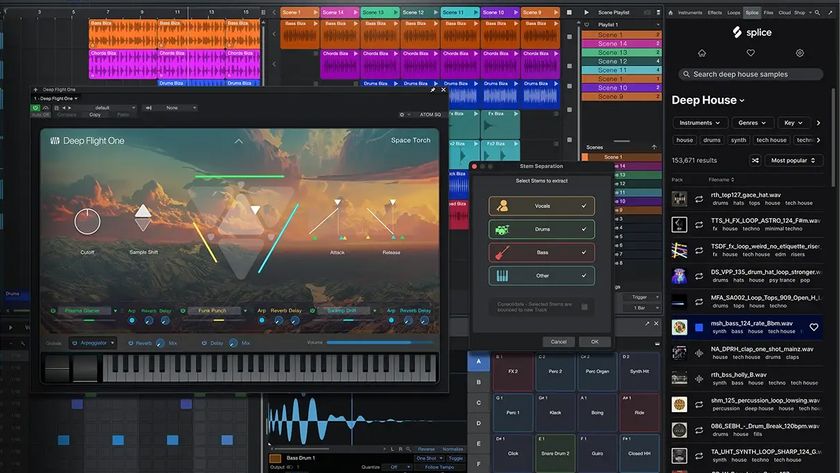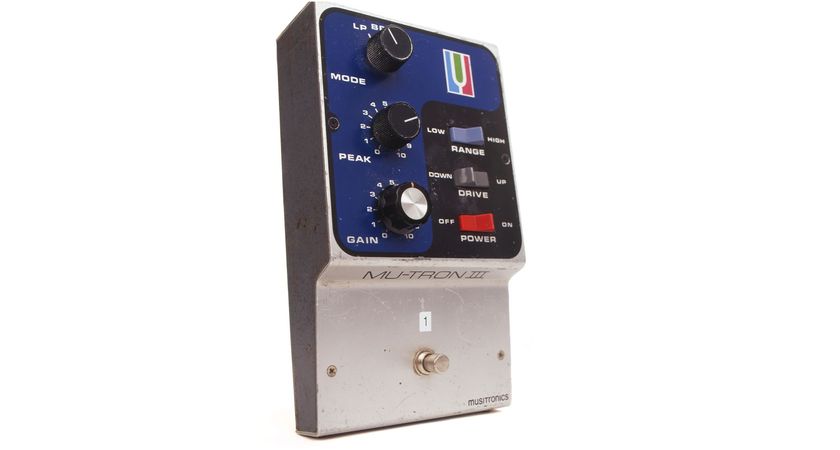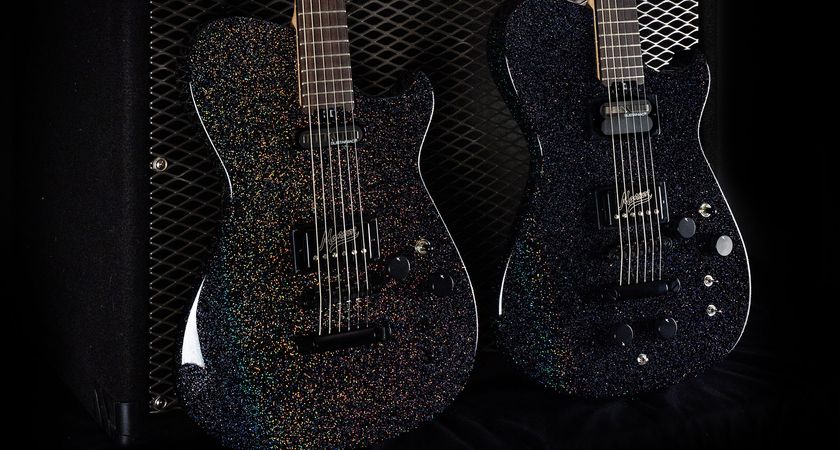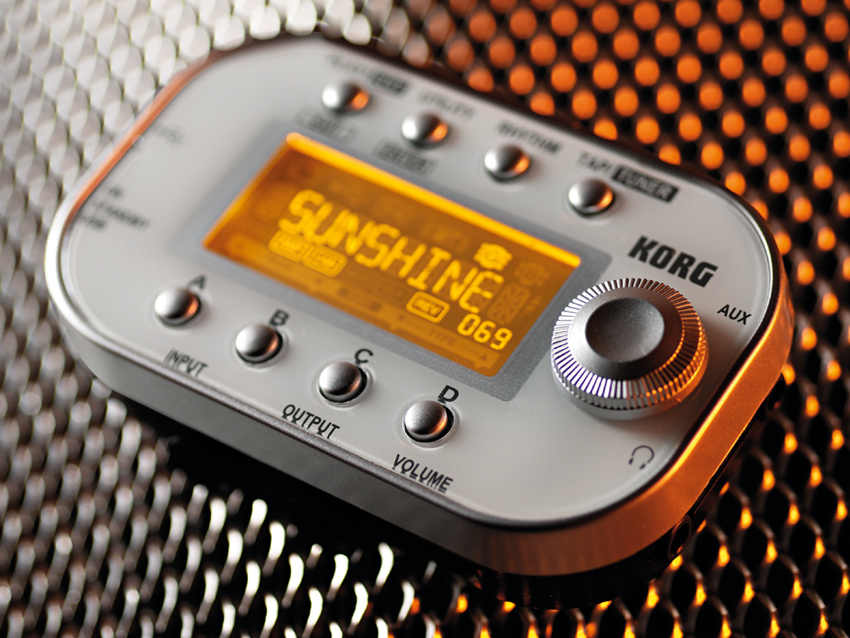MusicRadar Verdict
A diminutive but immensely practical pocket-sized practice tool for headphone use.
Pros
- +
Compact size. Wide range of playable sounds. Rhythms. Computer editing.
Cons
- -
Overcooked effects on factory settings.
MusicRadar's got your back

Korg Pandora Mini

Korg Pandora Mini

Korg Pandora Mini

Korg Pandora Mini

Korg Pandora Mini
Korg's various Pandora units have been around since 1995 and have got not only more sophisticated, but also smaller with each new model. The latest addition is the ultra-compact Pandora Mini, available in black or white and, at just over three inches long, able to slip into any pocket.
The basic premise of the Pandora has always been to provide a portable practice tool with a variety of fully produced guitar and bass sounds.
"You can play away in isolation, but the really great thing is that you can play along with drum rhythms."
The Mini utilises Korg's REMS modelling technology to provide 158 different effects over seven categories (dynamics and pickup modelling, amp modelling, cab modelling, modulation, delay, reverb and noise reduction) that are chained together to make a selection of 200 preset programs (160 for guitar, 40 for bass). There are also 200 user locations for storing your own sounds.
If you want something to play along with, there's not only an onboard metronome but also 100 different rhythm patterns with adjustable control over tempo, volume and reverb.
You can also jam along to your favourite songs on CD, mp3 and the like by plugging a player into the Mini's aux input - a variable pitch function lets you match the key of the song to the tuning of your guitar.
Powered by battery or via USB bus power from a convenient computer, the Mini has an uncomplicated layout. A set of four buttons, marked A to D, instantly call up your four favourite presets, while a similar set above take care of tap tempo, calling up the tuner, playing rhythms and anything else in conjunction with a single rotary dial.
A rotary volume control for the headphone and line output is located on the front of the unit.
Sounds
The first port of call for anyone trying the Mini for the first time has to be diving in and auditioning the presets, where you'll find sounds suitable for a wide range of musical genres and playing styles, demonstrated ably by 115 Song Presets designed to recreate the specific sound used by a famous guitarist on one of their signature tunes.
Among these, you'll find many familiar names - some widely regarded as classic guitar tracks and others that are more leftfield. There's something for everyone. Alongside the obligatory Hendrix and Clapton, you get Dick Dale's reverb-drenched surf twang on Miserlou, Mick Ronson's parked wah on Ziggy Stardust and Radiohead's tremolo'd Creep.
Not all of the Song Presets are successful, particularly where the modulation's been overdone (Message In A Bottle sounds slightly seasick, and while we wouldn't go so far as to say that Eight Miles High is more turds than Byrds, it's really not a great 12-string emulation).
Get the Pandora Mini out of your headphones and into a guitar amp or PA and it doesn't stand up to the higher-end modelling units from Line 6, Vox or BOSS.
Editing is easy enough using the front panel buttons and rotary dial, but dedicated sound editor software (available as a free download from the Korg website) on a connected computer makes editing and managing programs a doddle.
You can play away to your heart's content in isolation, of course, but the really great thing about the Pandora Mini is that you can play along with drum rhythms - brilliant for improving your timing in a range of styles, time signatures and tempos (via the tap tempo button or rotary dial) and also inspirational in getting you to play stuff you might never have thought of, while giving you a solid foundation for songwriting.
Get a guitar sound that suits a particular rhythm pattern, set the balance so the sounds really mesh and you'll have hours of creative practice… and fun. Once you start playing, it's hard to stop.
Most of us are by now well conversant with the amp simulations and practice facilities that are available on computers or portable devices such as the iPhone, but there will always be a place for a dedicated hardware practice unit, especially one that can slip easily into a pocket or gigbag and be used anywhere that you wish.
It's hardly the world's best sounding effects device when plugged into an amp, but if you want to practice guitar any time and anywhere, the Pandora Mini is all you'll need, along with headphones, a lead and your guitar.
Trevor Curwen has played guitar for several decades – he's also mimed it on the UK's Top of the Pops. Much of his working life, though, has been spent behind the mixing desk, during which time he has built up a solid collection of the guitars, amps and pedals needed to cover just about any studio session. He writes pedal reviews for Guitarist and has contributed to Total Guitar, MusicRadar and Future Music among others.

"An upgrade that’s all about creativity": PreSonus Studio One Pro 7 review

“This company has not only copied the trade-dress, they have even assimilated the history of Musitronics into their videos”: Musitronics slams “$2 billion German company” for copying Mu-Tron effects

“A high-spec instrument at a competitive price”: Sustainiac pickups, onboard Z.Vexx Fuzz Factory circuits, a Night Sky Holosparkle finish? Manson lavishes Matt Bellamy-approved specs on updated M-Series electrics
Most Popular






